Aloe Vera grows like a weed here in Thailand - everywhere! - and no one thinks it's particularly special. In a country with an astounding variety of healing and medicinal plants, it's at the garden-variety, helps-your-skin-heal end of things.
None of this nonsense of carefully planting out pups... 😆 you literally throw a piece over your shoulder in the garden and don't even have to cover it with soil... it will just grow and keep reproducing.
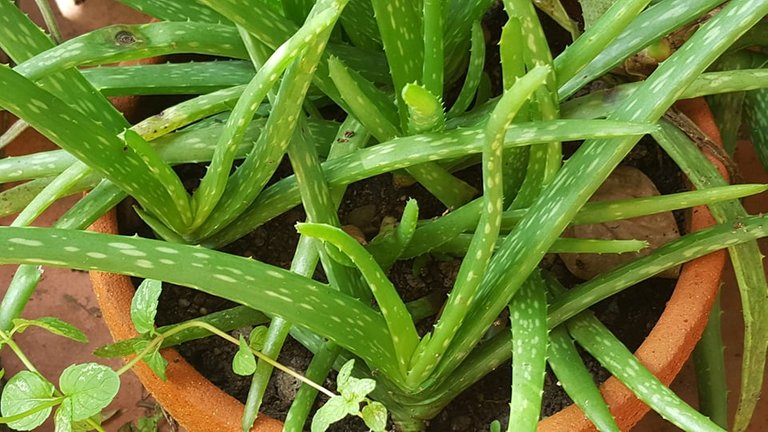
But in my 20 odd (emphasis on odd 🤣) years of living here, I've never actually watched an aloe vera go through its entire flowering process. Until this last month... And what a joy, and a learning journey it has been!
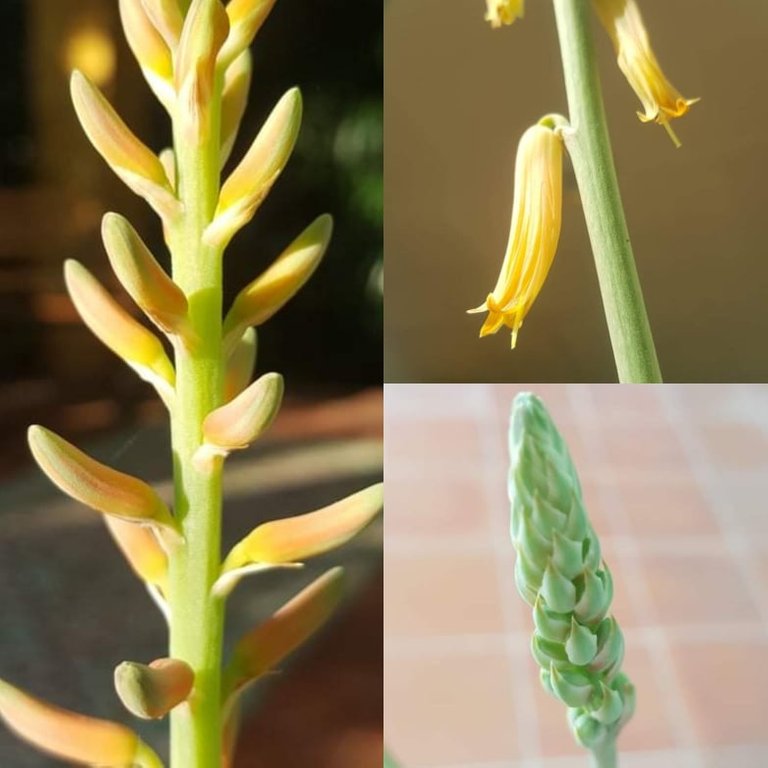
Ironically it was the much-neglected, never-repotted-in-living-memory aloe pot that we use as a door stop on the front porch that popped into flower.
It started like this...
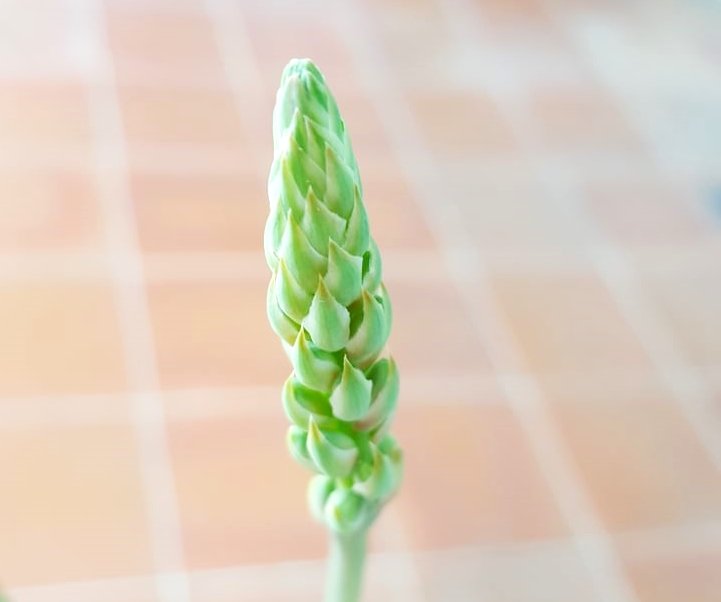
The stem grew TALL until it stood a good 12-15 inches above the plant. I discovered via some niche garden content online that aloe vera plants generally need at least 3-4 years before they flower, and that they only flower under ideal conditions. Thankfully they produce pups like crazy and we're not waiting for that elusive flower for the plant to reproduce.
As the flower began to unfurl, I watched in awe.
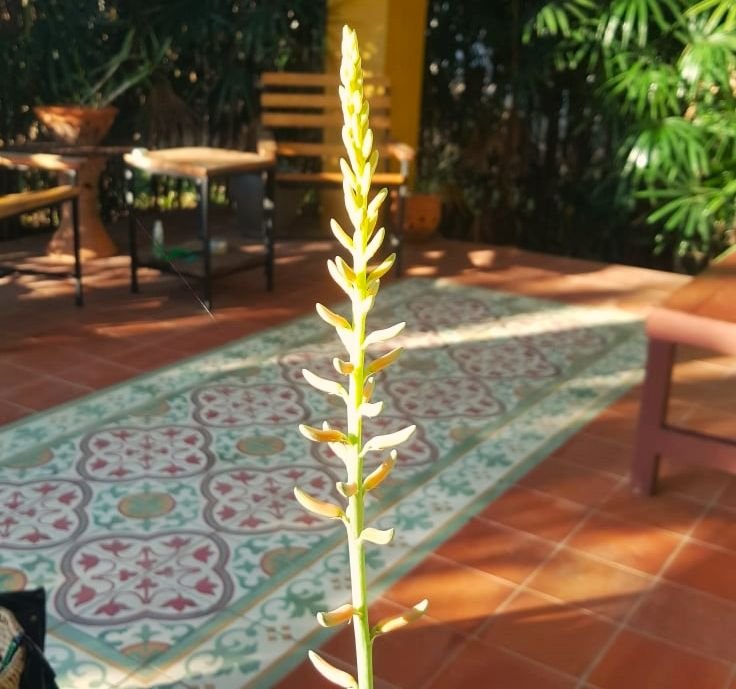
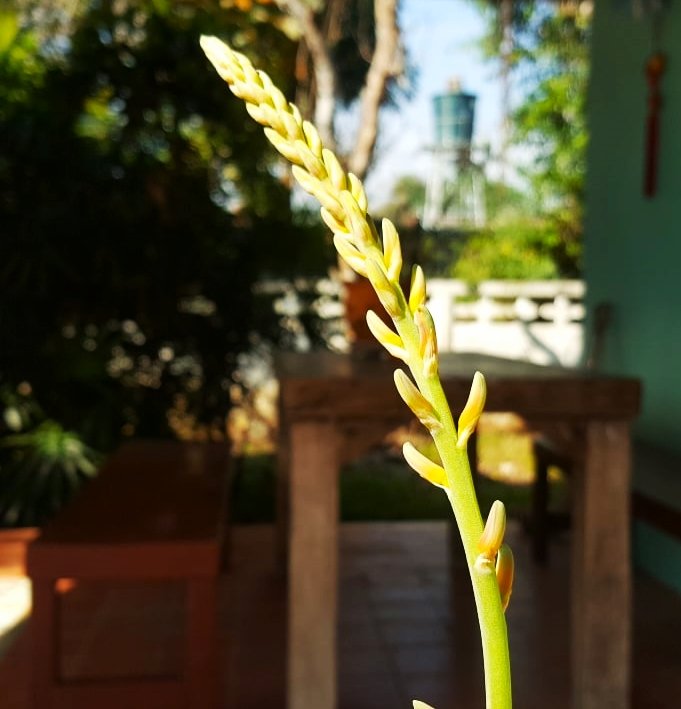

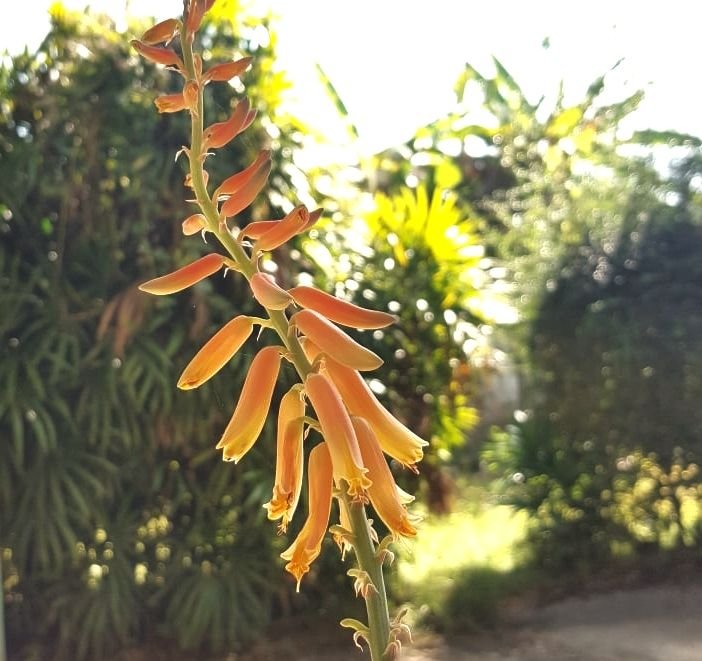
I learned a lot about the unique pollination process of the aloe vera flower.
Aloe vera produces flowers that are protandrous, which means the stamen, or pollen-releasing part of the flower, releases pollen before the stigma, which receives pollen, is receptive. This makes the plants unable to self-pollinate. For this reason, Aloe vera relies on mobile pollinators to grow and thrive. Source
The most common pollinators are tiny hummingbirds. Having learned this, I suddenly understood why my gorgeous aloe flower appeared all fluff & bobble and actually produced nothing by way of fruit. Given this pots location near our front door, I understood why the local hummingbirds gave it a wide berth. Clearly one needs more than one aloe plant flowering at a time to even be thinking about expecting fruit. Good to know.
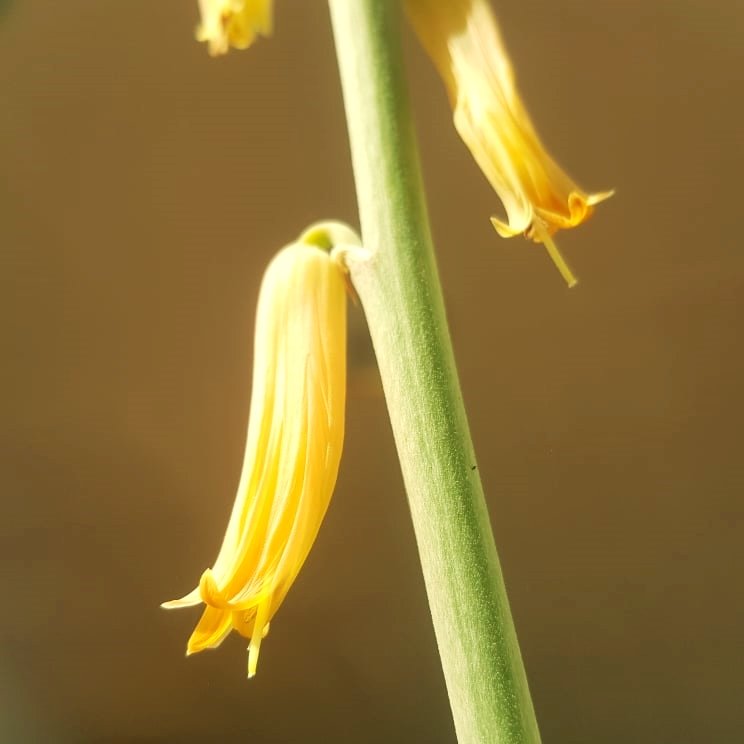
The more I knew about the process of the aloe flower, the more questions I had:
If the aloe plant doesn't NEED the plant for reproduction, then what exactly is it really for?
And are it's properties the same, or different from, the healing gel contained within the aloe leaf?
The first question is easy to answer: the plant produces seeds occasionally to protect and retain the integrity its genetic lineage.
Searching for an answer to the question of the healing properties of the flower, vs the aloe gel, was not so straightforward. The first discouraging finding perhaps only showcased the narrow focus of the researcher:
Comparative Study of Antioxidant Activity of Flower of Aloe vera and Leaf Extract of Aloe ferox
Results of the present study showed that antioxidant capacity of whole leaf of Aloe ferox Mill was significantly higher than Aloe vera flowers.Source
Intuitively I just knew that the aloe flowers have a very specific and powerful healing purpose, but I had some difficulty pinpointing exactly what. So I kept on trawling through various botanical studies I located using http://base-search.net Honestly, you really want to think about using varying search engines for research, cos it is somewhat frightening at what the google, bing and even duckduckgo machinery refuses to show you!!
My trawling and digging around in the online equivalent of the stacks paid off!!
A 2019 study, Insights into the phenolic composition and bioactive properties of Aloe vera flower, produced some truly ground-breaking results:
The extract revealed an interesting antioxidant activity, being able to protect the erythrocyte membranes and the β-carotene from the free radical generated in the in vitro reaction system. It was also able to inhibit and kill multidrug-resistant bacteria such as Pseudomonas aeruginosa and Escherichia coli and some fungi, including Candida albicans. It also inhibited the tyrosinase enzyme activity, which translates its potential as a skin whitening agent. Based on these results, it was concluded that the Aloe vera flower could be exploited by industrial sectors interested in bio-based ingredients due to its composition in flavonoids and antioxidant, antimicrobial, and tyrosinase inhibition properties. Source
Inhibit and kill drug resistant bacteria and fungi? 😮
Suddenly an aloe vera flower tincture NEEDS to be part of every natural medicne home health kit.
The other primary finding as a tyrosinase enzyme inhibitor is of nominal professional interest. I get ask ALL THE TIME about natural skin whitening agents. I personally prefer NOT to produce natural skin lightening products, since I believe beauty is not about looks or skin colour; I try to actively foster a culture of inclusion and diversity around me, rather than promoting a natural-how-to to help more wanna-be-lighter-skinned Asians. Nevertheless, it's interesting to know this is out there as an option.
So, I am now on a mission to encourage ALL my aloe plants to flower!! Because a super-tincture for treating drug resistant bacteria and fungi seems to be something that will get some serious use as our world continues to slather anti-biotics on most everything, continues to degrade natural people's immunity and continues to keep destroying the earth's natural balance which, in turn, provides opportunity for the super-bugs to thrive.
Have YOU ever had your aloe vera plants flower?
Hope you learned something from this herbal ramble and are encouraged to keep exploring, keep reading and keep growing your own herbal medicine, wherever you are in the world.


Get Your FREE Hive Account
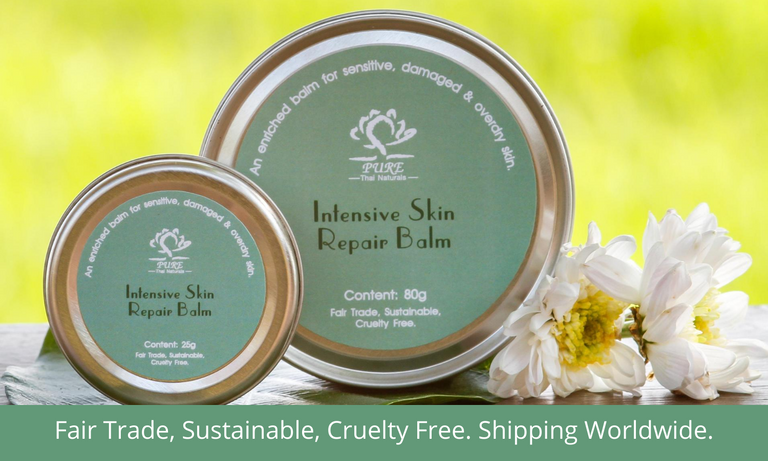

This plant is really beautiful in many different ways, what she gives us in medicinal way but also how she looks. I've seen it few times how it blossoms & that faze it's so beautiful too... Nice shots, by the way!
She is beautiful, no?? I was enthralled with the whole process, which took over a month.
Following you from Chiang Mai in Northern Thailand & looking forward to supporting your content too!! 😊
Thanks for following!
These days I'm almost posting only b'n'w film photography but here in Croatia, where I was born & mostly living, spring is coming quickly so I'm cropping fruit trees in my & neighbors' gardens...
We have here also hundreds of domestic, naturally growing varieties of medicinal Mediterranean plants & also have aloe growing anywhere you plant it or throw it! But they don't blossom so often, probably cause of the cold so I rarely see these beautiful flowers. I also didn't know about the medicinal properties of the flowers. Also in Morocco where I've been 2,5 years ago, in Chefchaouen, where's a very similar climate like in Croatia, only a bit warmer, I've seen the biggest aloe ever & blossoming with huge & very beautiful flowers...
Thanks for sharing the knowledge about the flowers!
That is amazing first time I have seen a Aloe Vera Flowers they look like Christmas bells. I have lots of these plants also around my garden also and have come in good use many times.
My mother always had christmas bells in the garden in Australia and I haven't thought about them in 20 years!! You are right!! And thanks for triggering a lovely memory. 😍😊
My pleasure @artemislives nice to have bought back some lovely memories to you 😊
Aloe vera is one of my absolute favourites. In fact when I moved to this semi-desert area over a decade ago it was one of only two plants I brought. Aloe ferox flourishes here. It is indigenous to our area and the aloe vera is thriving too. Mine has now multiplied all over the homestead and I just love the flowers. Which are often decorated with a little bee or sunbird. Such an incredible plant for so many reasons. How can more people not love it and have one in their garden. Or a pot in the sunny window
We had "Red Hot Pokers" in Australia that I can suddenly see in my mind's eye - and yes, all of these grow HUGE in the right environments.
I really love the idea of all the tiny weeny hummingbirds and sunbirds. 😍
Every time I see your name now I think of dirty fingernails... 🤣
Not exactly the impression I ever thought I'd leave on someone........
🤣🤣🤣 too funny.... x
Hi @artemislives, every day you learn;very interesting your publication about the Aloe vera flower, I had the opportunity to see the flowers of this plant in a nursery and it was very pleasing, I did not know that she blooms.
Blessings!
I'm glad you've had a chance to see this plant in a nursery and yes, the symmetry of it is really pleasing. Watching it flower has been wonderful!
Appreciated you stopping by! 😊
Great observation about the hummingbirds being the pollinators!
I think if we understand the pollinators then so much more of our gardening WORKS right?? In the end, a gardener is really like an A class matchmaker. 😁
I just did a podcast for a local group about pollinators and predators in the garden. It's important to know which are which lol but sometimes the line is a fuzzy one. Cutworm moths for example are pollinators of my Tomatoes while their larvae, the cutworms, eat the fruit.
Nature is a real mix and doesn't particularly care that we humans only like certain parts of the deal of life.
The rewards earned on this comment will go directly to the person sharing the post on Twitter as long as they are registered with @poshtoken. Sign up at https://hiveposh.com.